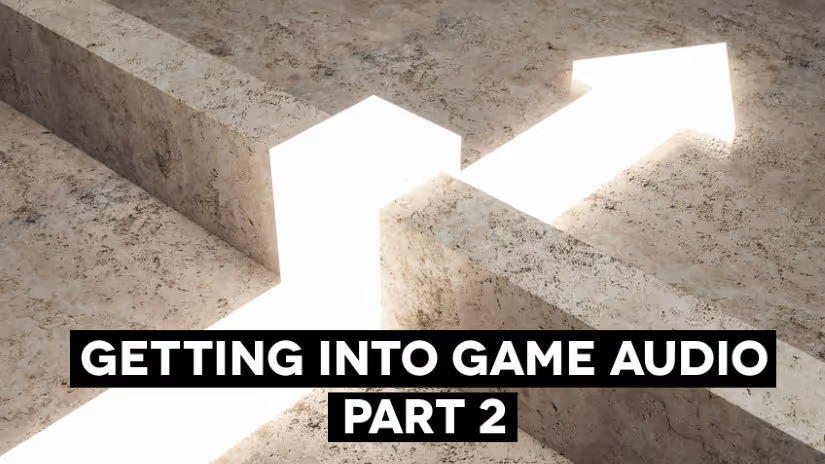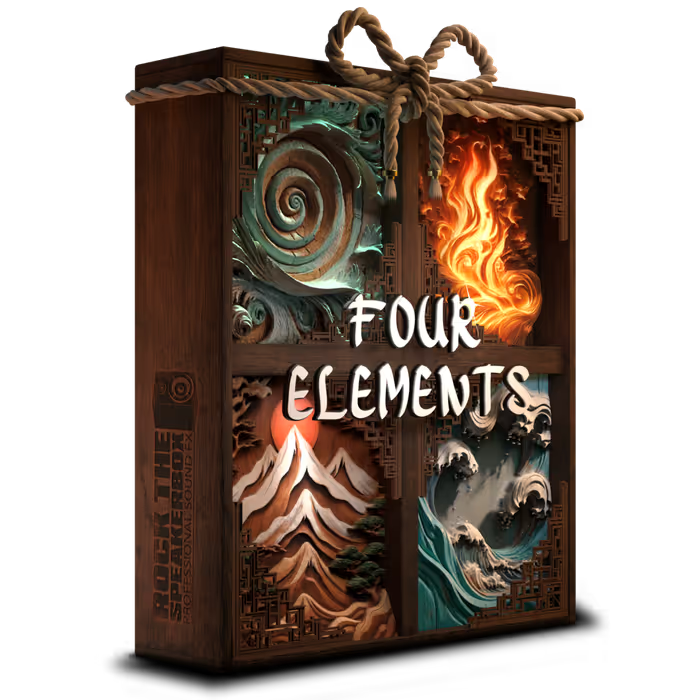Explore the other instalments in this series:
→ Guide to Getting into Game Audio with Megan Frazier – Part 1: Seaworld
→ Guide to Getting into Game Audio with Megan Frazier – Part 3: The Actual Interview
Master Tetris player, Kevin Birrell, played Tetris at grandmaster speed while the pieces were invisible for seven minutes. After being through The Long Slog™ of job hunting and being hired, I feel playing Tetris with invisible pieces at a grandmaster speed is a good metaphor for the process of getting into game audio.
The answer to how to get into game audio is nebulous and complicated. In writing this article series, I’ve decided it would be most coherent and revealing to work backward to describe what an interview series is like before trying to move to the more demanding challenge of “how do I get one?” This article will define the interview process from application to screen, and examine the possible reasons you are not hearing back.
Ultimately, you need to generate your own strategies to play the game with the invisible pieces. But I hope to make this game more accessible to more people.
The Application
The application is pretty self-explanatory; filling out the application is something most people have done. The only tiny bit of advice I have is to avoid spending too much time filling it out while maintaining your submission quality free of glaring errors. For example, if you are applying to Sony Santa Monica, don’t say how much you’ve always dreamed of working at Rockstar, whose parent is Take-Two Interactive. Some people will custom curate their resumes to fit every position they apply to; however, I feel this is a gross waste of your time. If it saves you time later for other applications you intend to pursue, that might be ok. The only other exception is to curate for a firm that you know from a business perspective will be interested in talking to you about a specific job you’ve done. For example, I did an XR experience where I worked with a rumble floor. If I were hunting a position where I knew the game studio wanted to really focus on haptics, I would take the time to custom curate that in my resume, whereas in my general resume, I doubt it’s on there. Overall, again I’ll emphasize: your time is by far your most valuable resource.
Occasionally you will encounter a cover letter, which is a disgusting tradition of wasting everyone’s time that refuses to die. I use cover letters as a short message to the hiring manager. My cover letter usually consists of a sentence or two covering the basics of my background, a sentence on why I’m interested in the firm or position, and a polite “call to action” stating I’m interested in talking to them. While I am 100% certain that someone has gotten an interview based on a well-crafted cover letter, I think the majority of game audio hasn’t, especially younger professionals who do not have the benefit of a foundation of experience. If you have, please share your story.
Some firms’ applications ask for compensation expectations in an application. This is the first step in the negotiation process, known colloquially as the “anchor.” Let’s say theoretically, the pay range for the position is 100-120K. The firm may go to 135K for the correct candidate they are “willing to go to bat for” to ensure they get the best. If you put down 150K, you will be screened out upon application (for simplicity’s sake, let’s assume you cannot contact the hiring authority directly to supersede this). If you put 90K, you have effectively taken 135K off the table. If you must apply before getting an opportunity to ferret out the range, try to anchor a bit high. Just recognize that you’re losing leverage by not being able to determine what the client can pay.
You have to either guess or do data gathering on the sly to figure it out. My data gathering primarily resides in personal connections; I take folks out to coffee and see if I can weasel it out, sometimes months/years in advance of actually being asked, “what are your salary expectations?” There are places like glassdoor that can help, but they are mainly aggregate, and game audio is too tiny a section to get large swathes of data. Another resource is the GameSoundCon annual salary survey. Finally, once you have job experience, you have a dedicated rate to bring to negotiations. It’s just a little tricky when you are starting your career.
Never hearing back after application: Unqualified
If you are genuinely unqualified, try your best not to fall into despair. If you must despair, do so with the good company of peers and mentors. There will come a time when you are ready, so work on your skills, work on your connections, try again. Persist.
After I managed to get out of the despair headspace, I would occasionally go to this phenomenal bistro Cafe Pettirosso and order a good breakfast, excellent coffee and write out ideas of what I needed to land that role next year / next time. It was a luxury I could barely afford on my pizza call center part-time job, but these sessions helped create “concept boards” of selling my skills. Let’s say the job description I had been culled from was for a sound designer role, and they asked for “game platform limitations and performance optimization.” Maybe the firm was also an Unreal shop. In assessing my portfolio, I would conclude that the receivable (little video demo) perhaps should focus on Unreal because my Unity portfolio is already fairly solid. I would then think about stories I wanted to tell, exciting moments I’d like to see in-game, paradigms I was curious if they’d even work. Once I’d have the story and “gameplay loop,” I could make a level. After getting the level working, I could craft a narrative around what I learned about CPU profiling and how to estimate the footprint of the audio pipeline, with the backdrop of the conversation being: “I did this to craft an amazing sonic experience.” Then, I would think of the various firms I knew that would be interested in that prototype who might be interested in hiring me down the line, including the firm that turned me down. Not all my prototypes succeeded, but a few did. It was amusing to have a bored hiring authority go through his checklist asking in a monotone voice, “and what are your implementation skills?” and shoot back with “I dunno, you wanna see?”. It takes a lot of time and effort to develop these though, just do your best to be proactive.
Never hearing back after application: Failure to Communicate Value Proposition
To talk about failure to communicate value proposition, I need to do so against a larger backdrop of bias in hiring. I also need to throw out a disclaimer: first, I am not in a hiring position at my day-to-day professional job. I have hired help on various audio contracts and have assisted in building and hiring professional teams for regional-sized banks of 10 billion in assets or more. That qualifies my opinion as informed but not as a subject matter expert.
The bias problems at the screen stage deal primarily with miscommunication between HR and the audio team. Our brain tends to clench around new ideas or concepts.Suppose you are a hiring manager and are not seeing diverse candidates from minority communities. One possibility is that minority candidates do not believe they are qualified based on your job description and don’t bother wasting their time applying. Alternatively, they are being culled at the application stage because the stakeholder responsible for sorting candidates likely did not understand that skills are more on a spectrum of competency and did not take the time to ascertain whether they are qualified.
Candidates from minority backgrounds are equally talented statistically speaking as the wider candidate pool. The only real difference is that minority candidates are more likely to lack the amount of time able to dedicate to their reels, their professional networks, and developing skills, and money (which is merely time concretely measured) to buy a lot of the expensive gear, plugins, and tools our art promotes. The wider candidate pool is only heavily favored in our industry because it is easier for hiring authorities to determine they are qualified, not because minority candidates are unqualified.
Call to Hiring Authorities in the industry
Screening is a skill. Try spending some time visiting with the “sorter of resumes” to ensure your team is not culling valid candidates battling huge systemic socio-economic problems. It is a good practice for your studio and the industry as a whole. I remember a hiring authority once telling me a stakeholder once asked him how to evaluate reels. This situation stunned him because the answer was obvious; the stakeholder couldn’t. To meet the stakeholder in the middle, he asked them to cull reels that were longer than 10 mins and those that didn’t make sound within 10 seconds. My reel for that position was still culled, despite meeting the criteria the actual hiring authority had set down. Understanding interdisciplinary arts and fostering good communication between departments is essential to a good sound team, including HR.
If you are on the HR side of things, I am not attempting to blame you for everything wrong in the hiring process. Try to prompt the hiring manager to give you open-ended questions, like “How do you make something sound sad/miraculous/lonely?” “What is the key to ensuring a stable code base?” “What is the hardest thing to accomplish in games from an audio perspective?” There are legal reasons why your systems work the way they do; your discipline functions to keep the company safe. All I ask is that you consider the bias that results from those structures and do better.
Audio Directors, when you are vibing with your other audio director friends at the audio director GDC talk, ask each other, “how can we better determine amazing talent this year, and how can we better do so in 10 years?” Sure, you have a level of skill required from this person, which I call “par.” This par is usually quite evident in the job description. But the vast majority of you folks aren’t looking for a skilled robot. Many times you are looking for someone “who can make the sound of grief when your wife dies,” “who can cause terror in players by the subtle change of an ambience,” or who can “create masterful tools that improve efficiency for the paltry CPU footprint audio managed to get.” These things absolutely rest in skill, but they live in a candidate’s problem-solving skills and personhood, more so than the fact they were lucky enough to get a gig at some AAA firm out of school because someone knew someone.
How to Communicate Value Proposition for Applications
The most crucial bit is to start having honest conversations with hiring authorities. I consider every online submitted resume directly sent into what I call “The Digital Dumpster Fire.” Have you ever been culled in 24 hours? Yup, that’s probably a robot or a stakeholder who is only spending around 12 seconds looking over your resume. I don’t mean that hyperbolically either; I would only spend 10-20 seconds on a resume as a recruiter. No joke.
My answer was tons and tons of local networking. I remember early in my journey finding a local coffee meetup of different faces in Seattle Game Audio every Friday, and I consistently attended for three years. This put me in touch with multiple hiring managers locally and allowed me to hear their gripes about work, about the audio pipeline, about hiring, basically about everything. It allowed me to formulate plans about what skills were highly needed in the market. I only solicited one person out of the regulars I met in my time there, and that person is special because he is someone I genuinely wish to work for someday. Instead, I used the time to help understand the industry by studying the microcosm I was lucky enough to encounter. I suspected that if I could hang on long enough, I could eventually get around the digital dumpster fire entirely because I already knew who was hiring by reaching out directly. And in this one small thing, I was very right. Understanding these structures exist, think about your abilities and how you can get around the digital dumpster fire.
The Screen
The screen is a practice of a dedicated “stakeholder” who is not the actual hiring authority to cull out candidates who do not qualify, yielding a much smaller pool of candidates who do. Traditionally this stakeholder is an HR professional at AAA firms, but not always. Screening is initially done by culling applications, then again usually with a short phone/teleconference interview for verification purposes.
Internal recruiters are employed by the game studio. If you are applying to Riot, they should have an @riot.com email, and their Linkedin should state they work at Riot.
External recruiters are firms paid contingent on the hire by the game company (let’s just say Riot) to locate talent. External recruiters would be a firm like TEKsystems, Yoh, Neal Analytics, etc. In a game audio contract, you will be W2 to TEKsystems, and your checks come from TEKsystems, but they are 1099 contracted and paid by Riot for the contract duration. All game studios that contract with external recruiters do so to avoid liabilities, paying benefits, and numerous disadvantages that crop up with FTE hires for the game studio.
External recruiters are 99.99% of the time paid per hour on top of your rate. For example, let’s say theoretically Riot pays TEKsystems $100hr, TEKsystems pays you $70 per hour. There are costs associated with holding an employee W2, so TEKsystems should get something (in this hypothetical example, $30 for every hour you work.)
The main difference in interests deals with ensuring TEKsystems isn’t taking advantage of you.
Say TEKsystems gets paid $100 per hour by Riot, and TEKsystems instead negotiates to pay you only $25. That means they are getting $75 per hour you work merely to process your payroll and ultimately your unemployment after the contract is finished. That’s a lot for doing very little, so recognize that the TEKsystems recruiter is not your champion on your rate. You are their product and cost center.
Finally, a contract-to-hire clause usually allows TEKsystems to get a large payout if Riot offers you full-time work. When I was in banking, this was thousands, sometimes tens of thousands of dollars. I suspect there are similar structures in game audio.
Unless an external recruiter is incredibly stupid, they will never reveal what Riot is paying them because admitting that number would cause them to lose catastrophic amounts of leverage over you. The actual hiring authority at Riot likely knows the pay rate number because they process the payment paperwork. What you do with that information is on you.
My entrance into game audio rested in developing relationships with hiring authorities or people who could introduce me to them easily. External recruiters like TEKsystems use a “right to represent” to ensure only one recruiter gets paid when Riot hires the candidate. A unique situation with external recruiters arises when I network directly with the hiring authority at Riot; the hiring authority will ask for me to interview, but I have not “locked in” with any external recruiter. Suddenly, every recruiter firm on the contract desperately wants to lock in with me because external recruiters only get paid when their candidate succeeds. When you hear about a contract job opportunity, do not “lock in” with an external recruiter if you have a connection to that game studio. Get the interview with the hiring authority (in this theoretical case Riot), line up the external recruiters, and determine which external recruiter will pay you the most. It’s a bit of a drain on your time, but you hold overwhelming leverage over the external recruiter if you have the hiring authority at Riot’s interest. Keeping this influence will make it easy to secure the best rate. If external recruiters give you any resistance whatsoever, politely thank them for their time and move on. Let them know explicitly you are talking to the other external recruiters on the contract. There are usually 3-4 external recruiter firms working on any given contract.
If you aren’t passing external recruiters’ screen calls, you are very early in your career. External recruiters tend to be willing to submit anyone, and I really mean that. One of the earliest “am I getting close to being in the industry” checkmarks is starting to get messages from recruiters for various short-term contracts. They are a good indicator of visibility in the marketplace. If you aren’t getting messages from external recruiters, consider overhauling your Linkedin keywords and resume. Another big one is to consider changing your location on your LinkedIn profile; recruiters often hunt per ZIP code.
Preparing for this job interview is pretty simple. A screening call takes anywhere from 15-25 minutes as a stakeholder (usually the Internal HR recruiter) goes through their assigned checklist, which is generally just the job description. This stakeholder is not the hiring authority, and game audio is not their discipline, so this can result in a lack of communication and culling valid candidates. Look at the job description and ensure you know what you will talk about for each bullet point.
If the application did not include money, money is likely brought up in this phone screen to ensure the pay is anchored in the correct ballpark. A candidate’s primary goal in this negotiation step, if they have not anchored during the application, is to get the range from the stakeholder without revealing their current number. It also is important to flex around the top to understand if that range is hard or soft. For example, if the stakeholder says 100-115K, it’s essential to pause and consider, then gently say something like, “To be honest, I was considering 110-120K, is that going to be a waste of time for us?” This moment in time is a critical juncture to be listening as intently as you can to discern the meaning behind their words. It is in the stakeholder’s interest to always tell the candidate the range is 115K, regardless of whether or not the pay range is flexible. If they say the pay range is not adjustable, do not take that at face value into the close (the final negotiation when you are offered the job). Listen carefully to how they put it. Regardless of the answer, assure them it makes sense to continue the conversation (assuming, of course, you want to!).
It is more likely that you failed to communicate your value proposition succinctly to the stakeholder than being genuinely unqualified because “why the heck did they call you in the first place?” Something made them reach out – something interested them. The solution is to work on communicating what you’ve done and how that fits the job description. Unfortunately, I don’t have a lot of tips and tricks here, other than discussing it with a peer or mentor.
If you genuinely aren’t a match, it’s usually pretty evident in the conversation. If I feel I am not a fit, I let the interviewer know immediately; we thank each other for the time and move on. Stating honestly where you are in your journey is a good enunciation of your authentic self. Saying qualifiers like “I can learn fast” will never get you a job.
Conversely, there are times where you will be culled without explanation that begin to point towards bias. I have had one situation where a recruiter was bubbling with excitement to take me further, and then I never heard back after my website got seven pings from whom I suspect were the audio team. I chalked it up to that I didn’t look the type. It could have been my experience or portfolio. It also could be because Megan is a name associated with women.
If you are a minority candidate who feels you are experiencing bias within the wider candidate pool, allow yourself the courage to acknowledge the reality that bias could be the cause, let yourself feel the feelings you need to feel, and let it go whenever you are ready. You will face this for the rest of your career; managing the problem is all you can do. Once you’re in and fully-fledged, try to make it suck 1% less for the person behind you.
As a final note, hiring processes are pretty messy. Not just after the screen but anytime in the interviewing process; sometimes stuff way out of your control ends the process. The position can go on hold; the company gets acquired, the list goes on. Remember, no matter how sideways things get, failure in this process is not a value statement on yourself as a person or an artist.
About Megan Frazier:
Megan Frazier is currently the Senior Sound Designer at Creative Labs, the software arm for HTC VIVE. When not hunting sounds with her trusty PCM D-100 named Larry, she is usually calculating her CS/min from her last LoL match or crafting big plans for her next D&D campaign. Learn more about her work here.
Power Lists - essential audio resources and insights:
• The Sound Design Power List
• The Game Audio Power List
• The Film Sound Power List
Succeed in sound:
• How to Set (and Get) the Right Price for Your Audio Work
• 10 Essential Tips for Game Audio Freelancers
• How to be a successful sound designer – with Scott Gershin
• How To Actually Live as an Audio Freelancer – by Melissa Pons
• How to set your sonic creativity free & overcome creative inhibitions – by Mark Kilborn
• 5 Useful Tips for Upcoming Sound Designers and Sound Editors
• Sound Opinions: How to get game audio pricing right
• Building a successful audio post studio – with Kate Finan and Jeff Shiffman
• Rebuilding your studio: Goals, tips and lessons learned
• Creating audio for games – with Martin Stig Andersen
• A life in sound: How to foster creativity and protect yourself from burning out – with Chance Thomas
• Better audio work habits: How a Wacom Tablet can help reduce the risk of Repetitive Strain Injury (RSI)
• Better audio work habits: How a sit & standing desk can reduce your sedentary studio life
• Tips and thoughts on running your own audio post production house – with William McGuigan
• 30+ year audio veteran Andy Greenberg, on building client relationships in the advertising industry
• 7 Sound Alternatives to Working For Free
• Audio Outsourcing Success: Essential Tips, Thoughts and Working Practices from Adele Cutting
• How to succeed in UI/UX Sound Design, ADR Recording, & Audio Programming
• How to succeed in sound design for Film, Documentaries, and Trailers
• How to succeed in sound design for Games, Animation, and Television
• How to succeed in Field Recording, Foley, and Teaching Sound
• How to succeed in Audio Branding, Music Editing, and sound for VR
• How to succeed in Theater Sound Design, Podcast Sound Design, and Podcast Production
• How to succeed in Sound Editing, Sound for Advertising, and Production Sound
• How to succeed in Sound Editing, Sound for Advertising, and Production Sound
• The Composer Success Series: Composing for Film – ft. Pinar Toprak, Nainita Desai, & Jonathan Snipes
• The Composer Success Series: Composing for TV – ft. Charlie Clouser, Sherri Chung, & Cindy O’Connor
• The Composer Success Series: Composing for Theatre – ft. Elyssa Samsel, Kate Anderson, and Daniel Kluger
• The Composer Success Series: Composing for Games – ft. Inon Zur
• The ‘Quit Aspiring’ book – by Adam Croft
• How to get hired in game audio – thoughts and insights from your potential employer’s perspective
• Why gear is not the ticket to entry in the game audio community
• 4 Effective Ways to Break into Game Audio
• Tips for Creating a Perfect Resume for Audio Industry Jobs
• Yet Another Game Audio Hiring Article – by Ariel Gross
• 5 Tips for Getting a Job in the Audio Industry
• Applying for a job in game audio – by Matthew Florianz
• Freelance Game Audio: Getting Started and finding work – by Ashton Morris
• How to get started (and make it) in game audio – 10+ fundamental questions answered by Akash Thakkar
• Courses: How to network and get paid for your work in the game industry – by Akash Thakkar
• How to Craft a Perfect Cover Letter for Audio Industry Jobs
• Get the weekly Audio Jobs newsletter
• Join the Audio Jobs Facebook group
• Upload your demos to Soundcloud
• Upload your demos to ReelCrafter
• Find interesting audio events around the world
• Find other audio pros around the world
• How to prepare for – and power through – a layoff in the game audio industry, with Brian Schmidt:
• How to Survive a Game Audio Layoff – insights from Damian Kastbauer
• What it’s like to be laid off from your video game studio
• What To Do Before and After Being Laid Off
• Facebook Group: Survival Skills for Creatives
• How To Learn Game Audio Online – A talk with Game Audio Educator Leonard Paul
• Hear the very best podcasts about sound
• Read the 100s of sound stories and guides on the A Sound Effect blog (search for stories here)
• Browse Industry Data: Game Music and Sound Design Salary Survey Results
• Browse 100+ Sound Design Guides
• Find essential books about sound – for film, games and audio post production
• Get tips and ideas for making your own sound effects
• Use the Audio Events Calendar to find audio-related events around the globe
• Get a steady stream of great sound stories from the community
• Discover 1000s of sound libraries from the independent sound community
• Take online courses in Wwise, FMOD Studio, Unity, Pure Data & Unreal at the School of Video Game Audio
• Sound effects survey results: Here are 90+ ideas for new SFX libraries
• How to create an indie sound bundle
• The quick-start guide to adding sound FX library metadata





